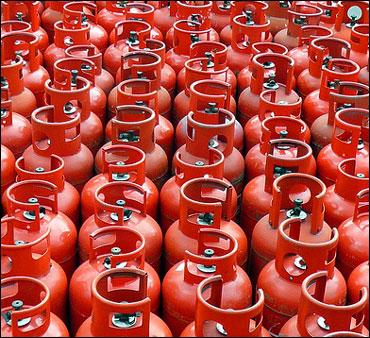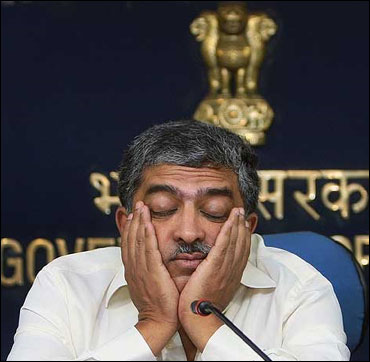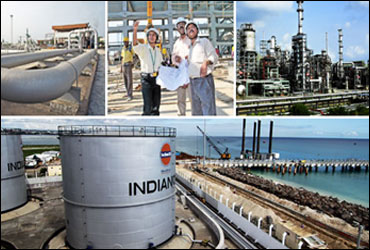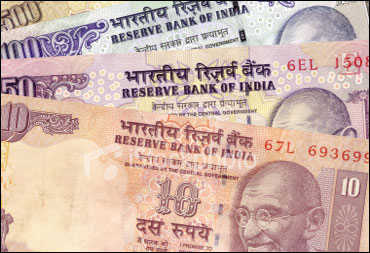 | « Back to article | Print this article |
Centre's subsidy reforms to start from South
Cooking gas (LPG) cylinders could soon be priced at market rates, with consumers being given subsidy directly through transfer of cash.
This is likely to start with about 50,000 consumers in Mysore and Hyderabad.
Senior government officials said the two cities were in a position to implement the plan because of higher linkage of Unique Identification (UID) numbers (known as Aadhar) with LPG customer numbers.
"A system will be in place in these cities by September-October, though a Cabinet clearance will be required," said an official.
In a year the government fears it may miss its revenue target, the success of such pilot programmes could test its intention to bring the fiscal deficit under control.
Centre's subsidy reforms to start from South
The Union government plans to adopt a step-by-step approach for giving cash subsidies to the poor for fuel, food and fertiliser.
"It first plans to take up LPG. Distribution of LPG subsidy is far easier as the beneficiary is easily identifiable," said a senior Planning Commission official.
An inter-ministerial task force, under Unique Identification Authority of India Chairman Nandan Nilekani, will recommend a mechanism for direct transfer of subsidy for kerosene, LPG and fertiliser.
An interim report is expected this month.
Finance Minister Pranab Mukherjee had said in his Budget speech that the system should be in place by March 2012.
This is how the system will work. Every LPG connection holder has a number registered with oil marketing companies (OMCs) through which he can be traced.
"The number will be linked to his biometrics and the LPG delivery boy will verify it each time the cylinder is given," said a senior executive in an OMC.
Centre's subsidy reforms to start from South
The LPG subsidy is the difference between the price a customer pays and the international parity price.
At present, a 14.5-kg LPG cylinder for domestic use is sold for around Rs 360, while the actual cost is Rs 606.
The government had earlier proposed that the subsidy could be limited to four cylinders in a year.
"Though the government will have to decide the exact quantum of subsidy, all households will get subsidy initially," said the official.
To make a distinction between below poverty line consumers and others, a separate exercise will be needed.
Centre's subsidy reforms to start from South
At a later stage, distribution of cash subsidy for kerosene, which comes under the public distribution system, could be taken along with food, said the Planning Commission official.
The governments of Bihar, Haryana and Delhi have already started pilot programmes for cash transfer of kerosene and food subsidies.
"It is good if subsidy is directly given to customers. The biggest advantage is that it will control diversion and adulteration," said Indian Oil Corporation's director, marketing, G C Daga.
To check diversion of subsidised kerosene, the Union government has been reducing the kerosene quota of state governments on the basis of the number of LPG connections.




